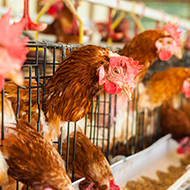Rabbit owners can identify pet’s pain, study finds
Rabbit owners usually rated the rabbit's pain lower than the experts did.
A study conducted by the University of Bristol Veterinary School has revealed that most rabbit owners are able to identify signs of pain in rabbits, and could recognise when they were in severe or no pain.
However, the pet owners lacked the ability to spot the more subtle signs of pain, which may indicate where rabbit owners might benefit from further education.
The researchers recruited rabbit owners through a variety of methods, including Facebook, to complete a two-part survey. Of the recruited members, 500 completed the first part of the survey and 345 completed the second part.
The first part of the survey collected the respondents’ demographics, as well as detailing their knowledge of the signs of pain and their beliefs about pain in rabbits.
The second part then presented them with eight videos, recorded during routine veterinary treatment, showing rabbits in different levels of pain. The participants gave each video a pain score, which was compared to scores from three veterinary experts.
In total, 98.6 per cent of participants correctly stated that rabbits felt pain more, or as much, as dogs and cats.
Participants were generally able to identify five signs of pain, including anorexia, changes in posture and movement. However, they were less aware of other signs, such as decreased grooming and changes in eye and ear position.
Women, those who had worked with rabbits, and those whose rabbit had undergone surgery were able to recognise pain most accurately.
The second part of the survey found participants generally agreed with experts when rating rabbits experiencing no pain (88.8 per cent) and severe pain (65.2 per cent). There was less agreement with rabbits feeling mild (28.4 per cent) and moderate (43.2 per cent) pain.
On average, respondents usually rated the rabbits’ pain lower than the experts did.
Dr Nicola Rooney, senior lecturer in wildlife and conservation at Bristol Veterinary School, said: "Most rabbit owners were able to list numerous pain signs and were generally able to recognise pain-free rabbits and those in severe pain. Owners’ ability to differentiate between mild and moderate pain is more limited and they could benefit from training in the subtler signs of pain.
“Veterinary professionals should also be aware of areas where owners' knowledge can be improved."
The full study can be found in the journal BMC Veterinary Research.
Image © Shutterstock



 An Avian Influenza Prevention Zone (AIPZ) has been introduced across Wales.
An Avian Influenza Prevention Zone (AIPZ) has been introduced across Wales.